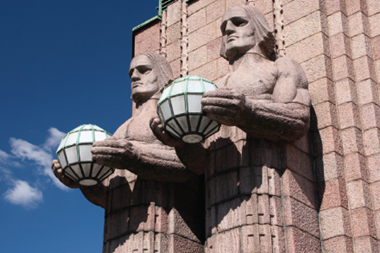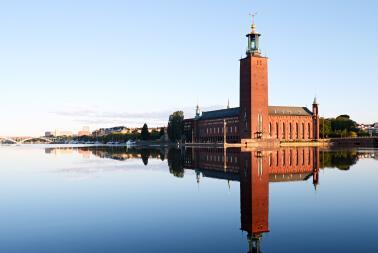Some of the Nordic region’s largest funds have reported their financial results for the first six months of the year in recent days.
Sweden
Sweden’s AP2, the second national pensions buffer fund, said its strategy of boosting exposure to emerging markets and internal management paid off in the first half of this year. It reported a 4.8% investment return for the period.
The return was 0.1 percentage points above the fund’s benchmark, and was achieved in spite of turbulent markets in the January-to-June reporting period, the fund said.
Eva Halvarsson, chief executive of AP2, said: “Our long-term strategy of increasing exposure to emerging markets and other investments — as to manage as large a proportion as possible of assets internally — contributed to a good net return and continued low costs in relation to managed capital.”
Its sister fund, AP3, recorded a 5.4% return after expenses in the first half of the year, beating its benchmark by 2 percentage points. Over the past five years the fund’s annual average return was 11.1%.
CEO Kerstin Hessius said the “strong performance” was a result of returns from equity and domestic real estate allocations in particular.
Meanwhile, Sweden’s largest pension fund Alecta reported increased returns on both its defined benefit (DB) and defined contribution (DC) pension products, compared to the same period last year.
The DC product, Alecta Optimal Pension, recorded a 5.8% return between January and June, beating its benchmark by 1.5 percentage points. This compared to a loss of 1.6% in the first half of 2016. The DB pensions insurance product gained 4%, up from 0.4% in H1 2016, the firm said in its interim report.
The group’s solvency level rose to 173% at the end of June from 154% at the same point in 2016, and total assets grew to SEK830.7bn (€87.3bn), from SEK793.2bn at the end of December 2016.
Elsewhere, AMF reported a 4.2% total return for the first half, up from 1.1% in the same period last year. Total assets under management grew to SEK588bn at the end of June, from SEK563bn at the end of December.
Javiera Ragnartz, CIO at AMF, said: “We have been given our savers a good return over these six months, which has not least been driven by strong progress on the Swedish stock exchange during the spring.”
But she warned that despite the brighter economic situation, political uncertainty could have an impact. This, combined with current low interest rates, underlined the need for a good spread of investment risk, she said.
Denmark
Denmark’s largest commercial pension fund PFA said returns on its market-rate pensions rose to between 2.6% and 6% in the first half of this year, including the addition of the customer capital supplement which arises from the provider’s mutual status.
This compared to returns of between zero and 3.9% on market-rate pensions in the same period last year.
Listed equities was the strongest performing asset class, producing a 5.4% return in the period, it said in its interim report. Including US dollar hedging, that return was 7.2%, which was more than double the MSCI All Country return of 3.1% in Danish kroner terms.
Alternative investments, meanwhile, produced 0.6% in the period, PFA said. The alternatives return was affected by a significant increase in new fund commitments, where the long-term expected return was high, but would only materialise after a few years, PFA added.
Real estate returned 2.2% and bonds lost 0.3% in the period.
Norway
Municipal pensions provider KLP posted a 3% return on customer assets for the first half, up from 2.7% in the same period last year. KLP said returns from equity and property had been the biggest contributors to the result.
Sverre Thornes, KLP’s chief executive, said: “The return on our customer pension funds are significantly greater than the return we guaranteed, and forms the basis for the profits we can share with our customers and owners.”
In the corporate segment there was continued interest in the transition to DC pensions, the provider said. During the first half of the year, 146 new corporate customers signed pensions deals with its KLP Bedriftspensjon division.
KLP’s group total assets rose to NOK628bn (€67.8bn) at the end of June, from NOK596bn at the end of December.










No comments yet